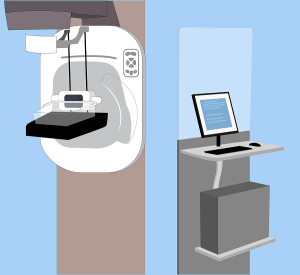By Bhvita Jani
The rising global incidence rates of breast cancer, coupled with the severe backlog of women requiring breast cancer screening appointments due to COVID-19, has reinforced the importance of women’s health and early detection of cancer. According to the World Health Organisation (WHO), breast cancer has surpassed lung cancer as the most diagnosed cancer globally, with an estimated 2.3 million new cases and equating to 11.7% of all new cancers globally in 2020. Breast cancer also was responsible for just under 690,000 deaths globally in 2020. As a result of the countable rise of breast cancer incidence globally, there is heightened pressures for government screening programmes. However, screening programmes alone are not sufficient to help tackle breast cancer mortality rates. It is essential that the accuracy of breast cancer detection is improved, whilst false positives and missed lesions are also reduced. These factors are forecast to be at the forefront of advancement in breast imaging for both screening and diagnosis.
Global drivers of the breast imaging market include strengthened awareness of the benefits of breast cancer screening programmes and the need to improve the accuracy of breast cancer detection. This, alongside a patient-centric approach to screening and technological advancements to enhance patient comfort, are improvements being implemented to increase participation of screening programmes which, in turn, has driven the uptake of mammography X-ray equipment.
The world market for Breast Imaging equipment is forecast to reach almost $1.3 billion by 2024 with the breast imaging AI market is forecast to reach $205 million, according to a new report from Signify Research. However, the mammography and breast ultrasound market revenues declined by just under 15% and 18% respectively in 2020.
The impact of COVID-19 on the breast imaging market
COVID-19 has severely impacted all medical procedures and healthcare facilities since the pandemic was declared globally in March 2020. Breast screening was significantly affected, with a high number of women missing scheduled mammograms. In the United States, the Centers for Disease Control and Prevention (CDC) reported that in April 2020, as the country was largely shutting down, 80% fewer screening mammograms were conducted compared to the average number of mammograms in April in the previous five years. With such a significant population of women missing screening appointments, there is a big concern that many more women will develop later stages of breast cancer in coming years as a result. However, to help deal with the patient backlog, significant investment will be needed in both medical staff and breast imaging equipment. With increased pressure on screening centres and hospitals to address the number of women requiring breast cancer screening, there is heightened interest in how AI can be used to help prioritise scans, by highlighting suspected cases or lesions. Cases that are most urgent can then be addressed as a higher priority within the radiologists’ workflow and accelerate patient care pathways or protocols for further diagnosis.
Key trends impacting the Breast Imaging market
•
Use of 2D versus 3D mammography in screening programmes
The United States is the only country that currently uses 3D mammography for screening, with all other countries only using this technology for diagnostic purposes. Western European countries are expected to be the next to adopt 3D mammography screening programmes, but this is not anticipated to happen until the next two to three years.
